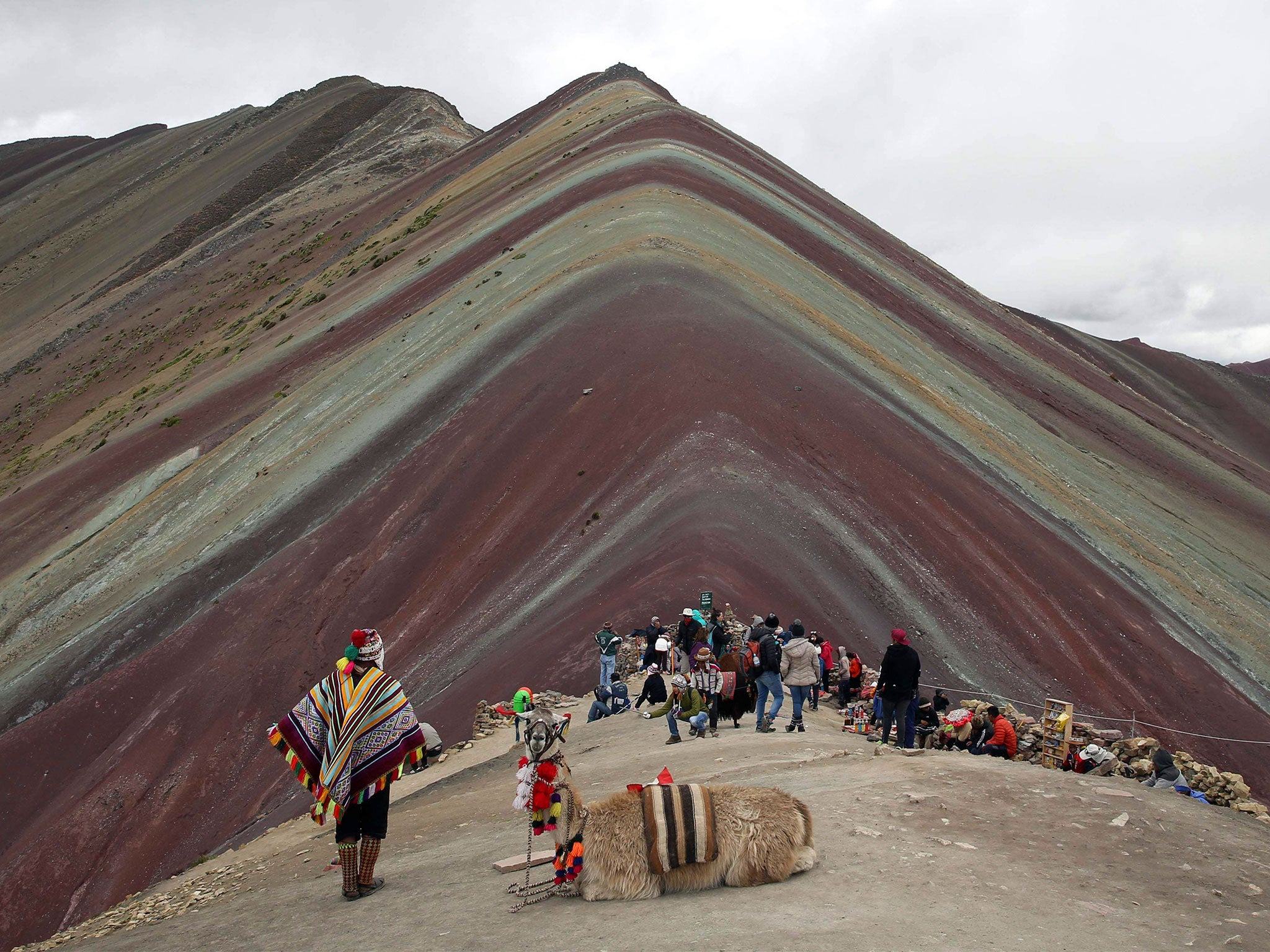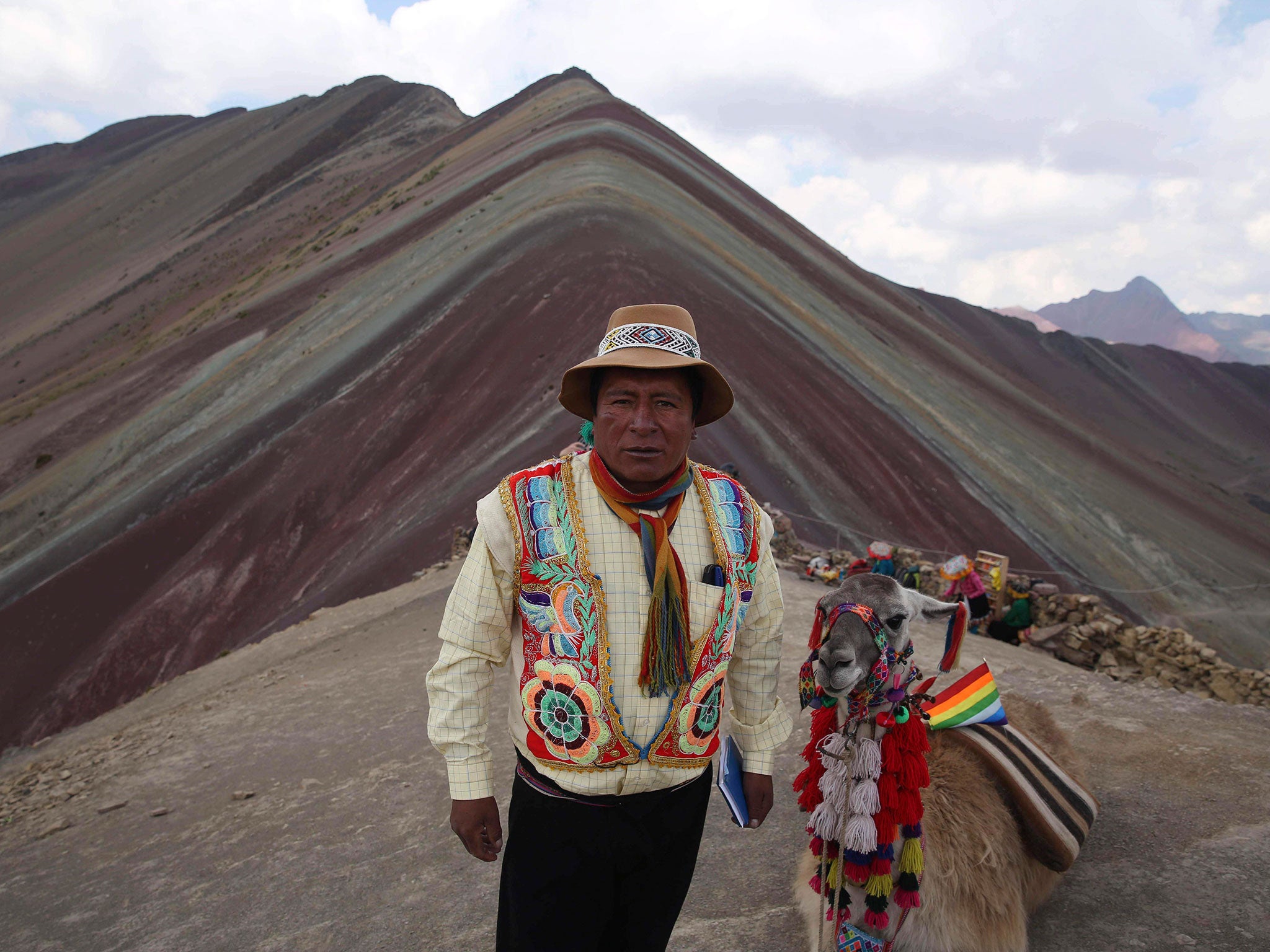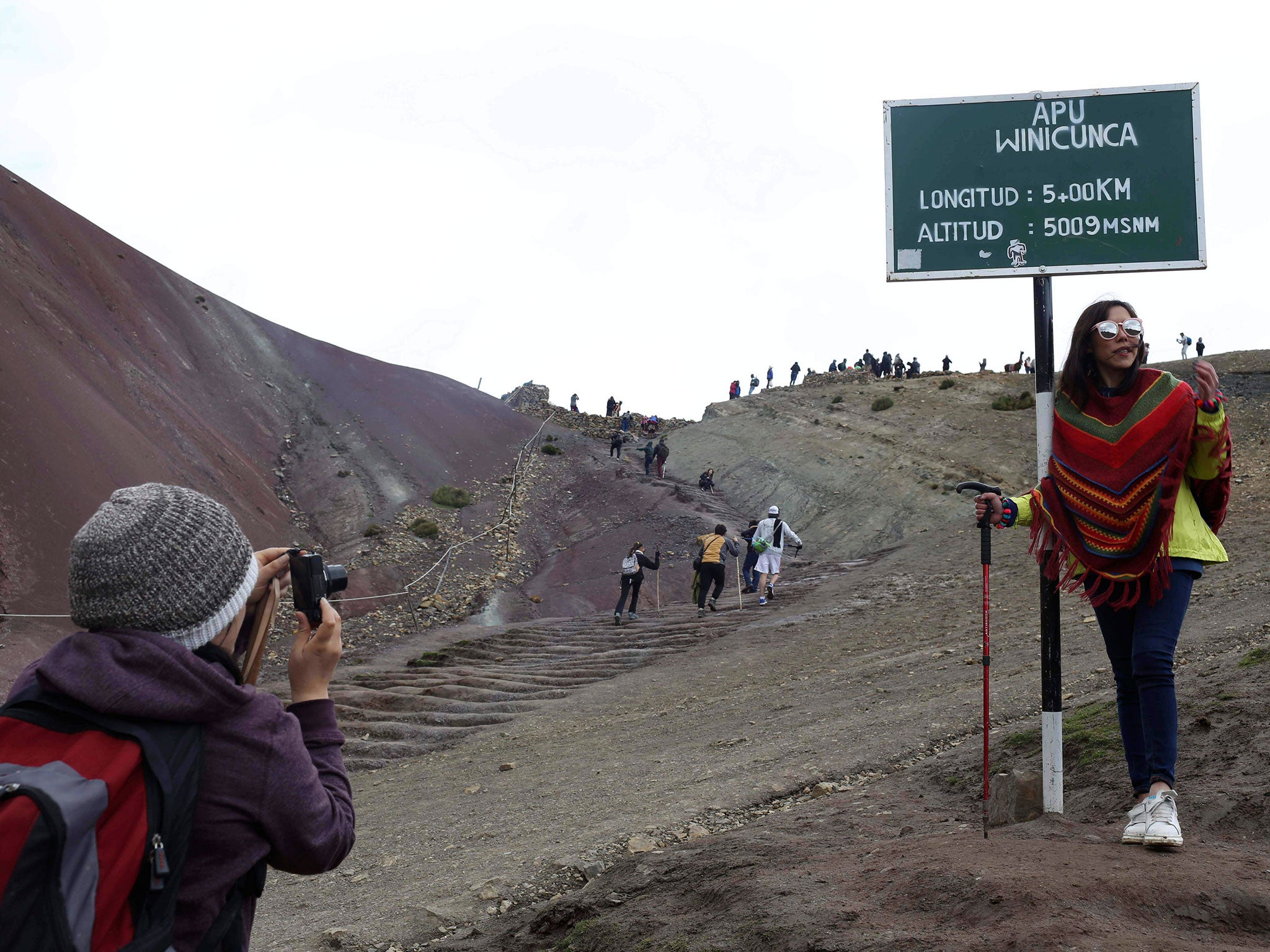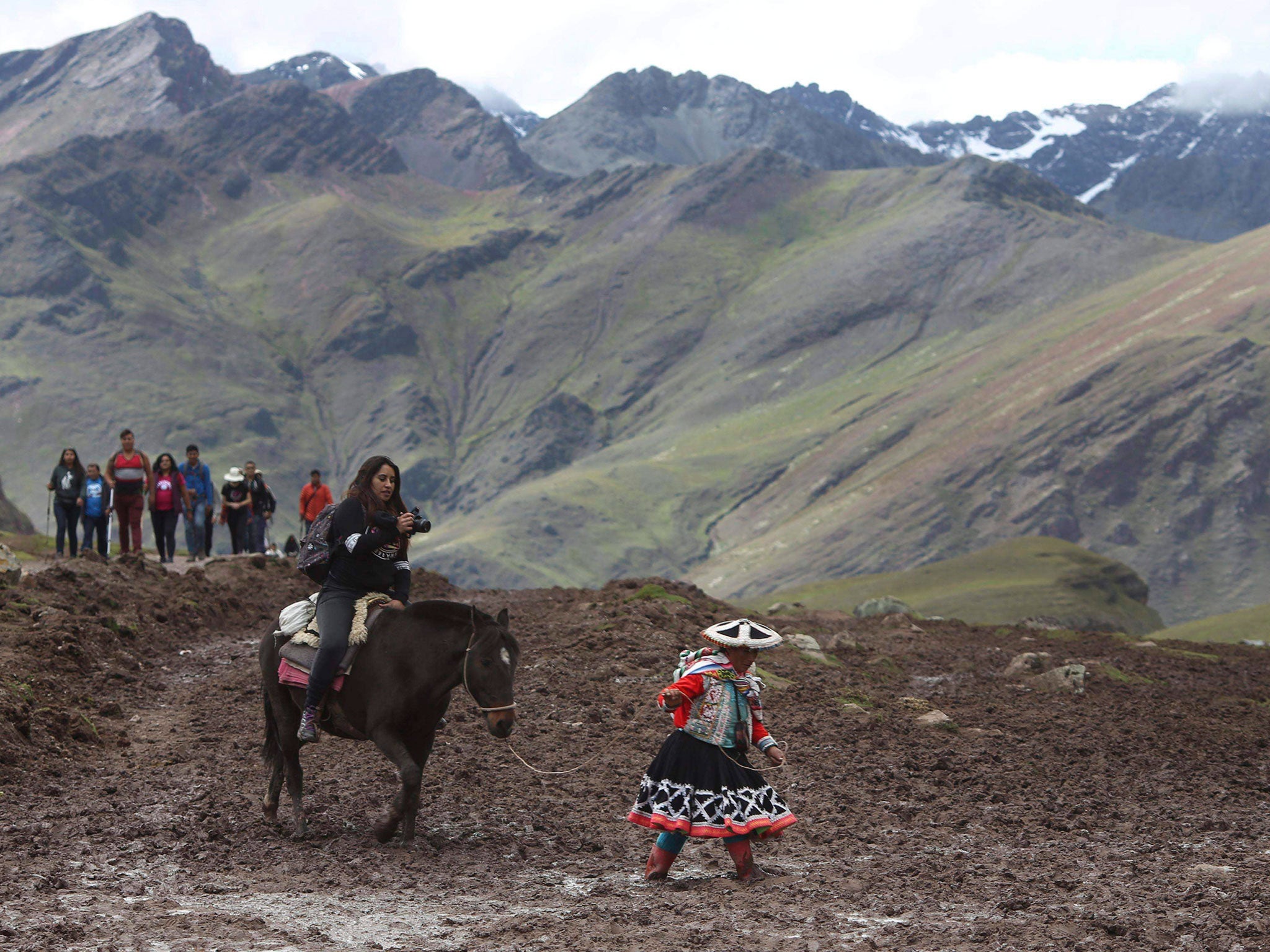Rainbow Mountain: Peru’s astonishingly beautiful newfound natural attraction that is already under threat
Stunning multi-coloured ridge only recently became popular with tourists, but environmentalists now fear for its future

The outside world has been aware of the existence of Peru’s Rainbow Mountain for little more than five years, but already there are fears it could be contributing to the peaks’ destruction.
Hidden away more than 16,000 feet (5,000 metres) above sea level in the Andes, the ridge is blanketed in an eye-catching array of turquoise, lavender and gold stripes.
Although Rainbow Mountain was formed millions of years ago as multi-coloured layers of sediment were laid down and then pushed up by clashing tectonic plates, it has only recently become a tourist hotspot.

Since it gaining notoriety outside the local community, the peak has quickly become a key stop-off on Peru’s backpack circuit, attracting up to 1,000 visitors a day.
"You see it in the pictures and you think it's Photoshopped - but it's real," said Lukas Lynen, an 18-year-old tourist from Mexico.
The mountain’s new-found popularity has provided a much-needed economic boost to its remote region populated by struggling alpaca herders.
But environmentalists are concerned tourists could now destroy the treasured landscape, which is already being coveted by international mining companies.
"From the ecological point of view they are killing the goose that lays the golden eggs," says Dina Farfan, a Peruvian biologist who has studied threatened wildlife in the area just a few hours from the Incan ruins of Machu Picchu.

As proof, he points to a 2.5-mile dirt trail climbed by tourists to reach Rainbow Mountain that has been badly eroded in the last 18 months, scarring the otherwise pristine landscape.
A wetland once popular with migrating ducks has also been turned into a parking lot the size of five football fields that fills each morning with vans of mostly European and American visitors.
However, there are more serious threats, too.
Camino Minerals Corp, a Canadian-based mining company, has applied for mining rights in the mineral-rich area that includes the mountain.
The company did not respond to a request for comment on its plans.
Despite environmental concerns, the flood of tourists has offered jobs and money for the local Pampachiri indigenous community, which has struggled with high rates of alcoholism, malnutrition and falling prices of wool for their prized alpaca.
Before the mountain’s discovery by backpackers, many villagers had abandoned their traditional nomadic way of life for dangerous gold mining jobs in the Amazon.
But more than 500 locals have now returned to the area to take up their ancestral trade of ferrying goods across the Andes – the only difference being they are now hauling tourists over the mountains on horseback.
Visitors are now worth an estimated £290,000 to the community each year, a windfall that has landed them in a tax dispute with an impoverished, nearby municipality that has missed out on the proceeds.
"It's a blessing," said Isaac Quispe, 25, who quit his job as a gold miner after six of his camp mates were murdered and returned home, buying a horse that earned him £3,800 taxiing tourists last year.
Environmentalists hope the Pampachiri can learn from other sustainable tourism endeavours in Peru, such as the town of Chillca nearby, which first put Rainbow Mountain on the map.

For much of the past decade, a group of shepherds had been quietly taking small groups of tourists to the mountain as part of a five-day hike around the fast-melting Ausangate glacier.
Over time, partly due to photographs shared online, the mountain became an attraction in its own right.
Today the Chillca community manage four lodges made of eucalyptus wood with a capacity for 16 tourists each. They are lighted only by candle, but have hot water.
"You always have to be guessing what the client wants, and take care of it so you don't lose their smile," lodge keeper Orlando Garcia says: "We want them to feel the greatest comfort at almost 16,404 feet."
Additional reporting by AP
Join our commenting forum
Join thought-provoking conversations, follow other Independent readers and see their replies
Comments
Bookmark popover
Removed from bookmarks